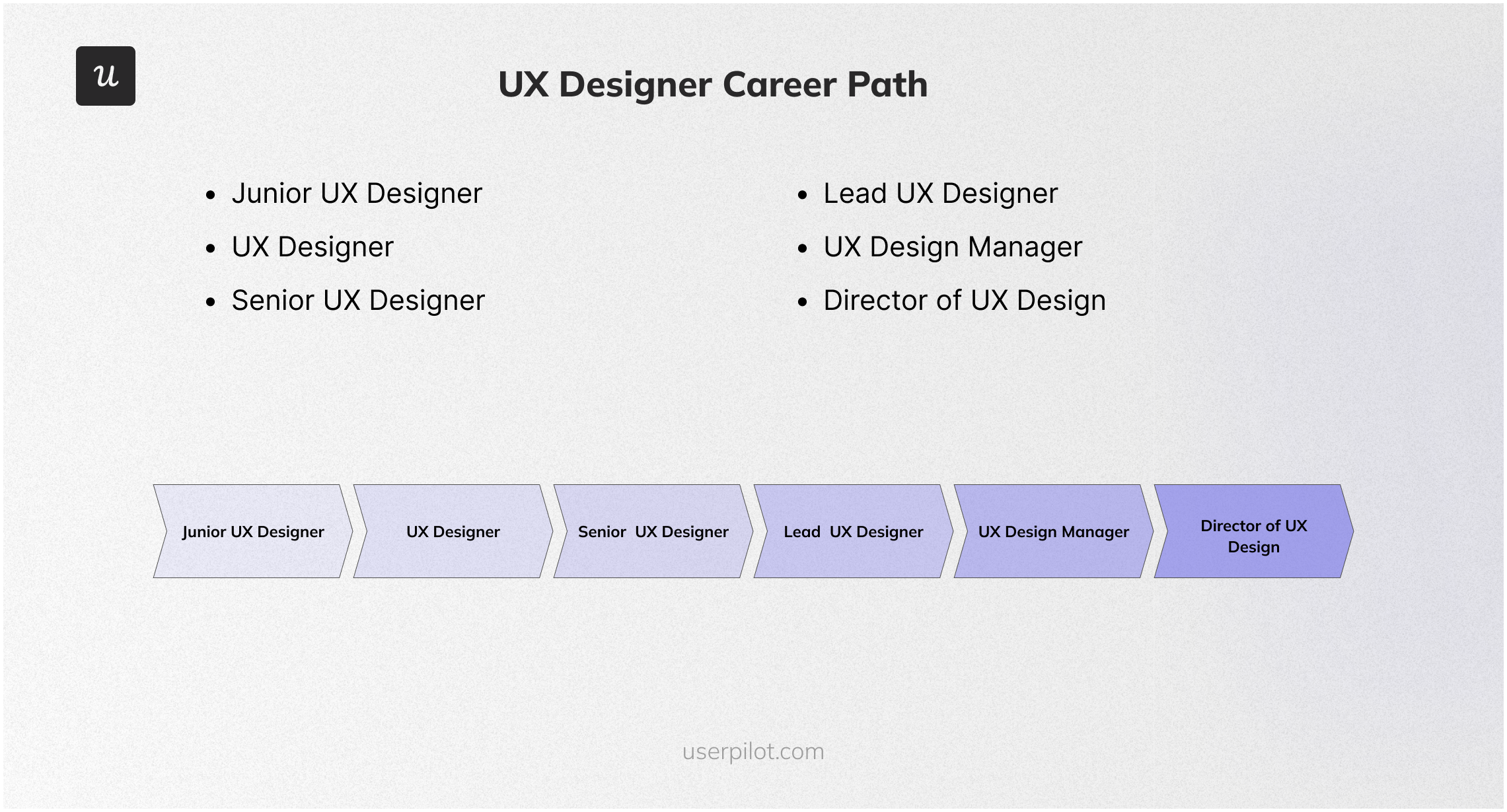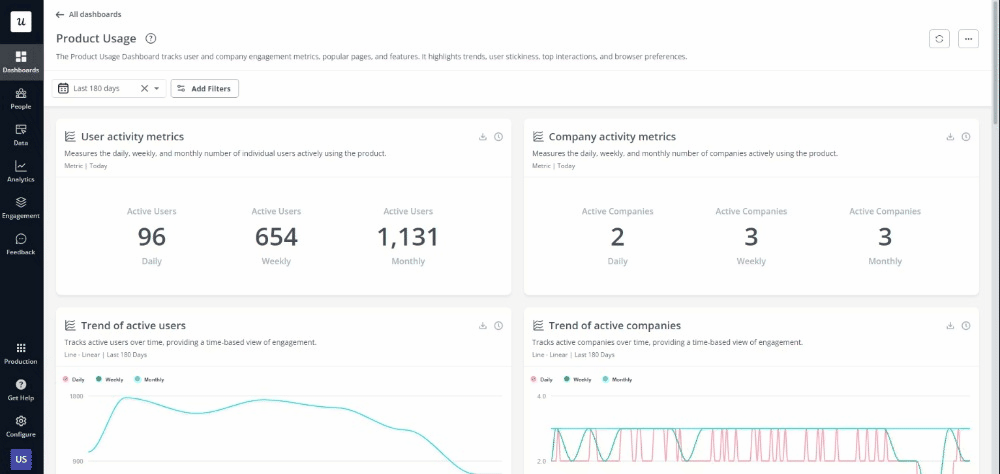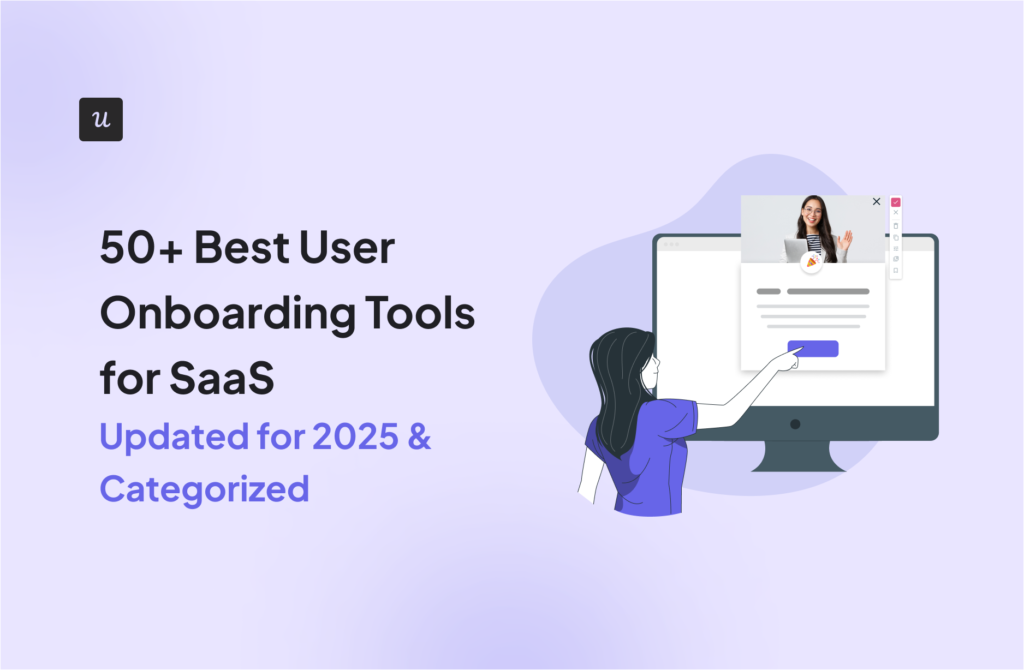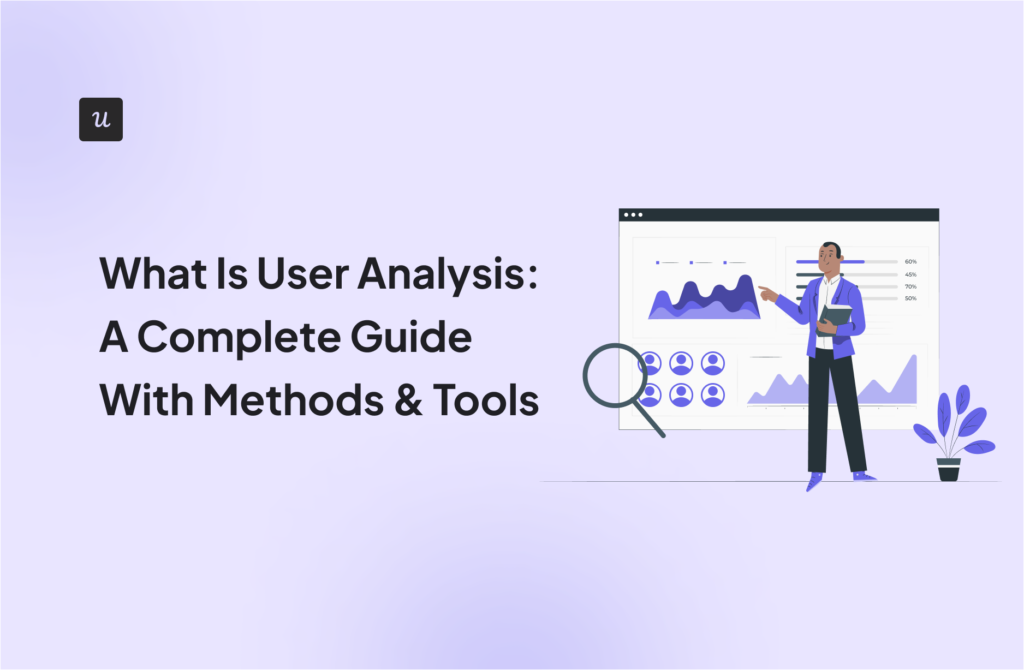![How to Become a UX Designer [+Tools and Resources]](https://blog-static.userpilot.com/blog/wp-content/uploads/2024/07/How-to-Become-a-UX-Designer-Tools-and-Resources.png)
How to Become a UX Designer [+Tools and Resources]12 min read
Get The Insights!
The fastest way to learn about Product Growth, Management & Trends.
UX designer’s main responsibilities
A UX designer is essential in the SaaS industry for creating intuitive and engaging user experiences. Here are the main responsibilities and duties of a UX designer:
- Conduct User Research: Perform user research to understand user needs, behaviors, and pain points through methods such as interviews, surveys, and usability testing.
- Create Wireframes and Prototypes: Design wireframes, mockups, and interactive prototypes to visualize design solutions and gather feedback from users and stakeholders.
- Design User Interfaces: Develop visually appealing and user-friendly interfaces that enhance the overall user experience and align with the product’s functionality.
- Collaborate with Teams: Work closely with product managers, developers, and other stakeholders to ensure that design solutions align with business goals and technical constraints.
- Perform Usability Testing: Conduct usability testing to identify issues, gather user feedback, and iterate on designs to improve functionality and user satisfaction.
- Maintain Design Systems: Create and manage design systems and style guides to ensure consistency across all products and maintain a cohesive user experience.
- Stay Updated with Trends: Keep abreast of the latest design trends, tools, and technologies to bring innovative ideas and solutions to the team.
- Document Design Processes: Maintain clear and comprehensive documentation of design processes, decisions, and guidelines to ensure transparency and consistency within the team.
These responsibilities ensure that a UX designer effectively contributes to the creation of user-centric SaaS products that meet both user and business needs.
UX designer career path
A career in UX design involves progressing through various roles, each with increasing responsibility and expertise.
Here’s a typical career progression for a UX Designer:
- Junior UX Designer: Focuses on learning design tools, assisting senior designers, and supporting user research efforts. To progress, build a strong portfolio, seek feedback, and gain practical experience through internships or entry-level positions.
- UX Designer: Conducts user research, creates wireframes and prototypes, and collaborates with cross-functional teams. To advance, take on more complex projects, refine your skills, and develop a deeper understanding of UX principles and methodologies.
- Senior UX Designer: Leads major design projects, mentors junior designers, and plays a key role in strategic planning. To progress, enhance leadership skills, contribute to creating design systems, and build strong relationships with product managers and developers.
- Lead UX Designer: Oversees the design team, ensures design consistency, and aligns design goals with business objectives. Develop project management skills, drive innovation within the team, and engage in high-level strategic planning.
- UX Design Manager: Manages the UX design team, coordinates design efforts across projects, and ensures alignment with overall business strategy. Enhance managerial skills, stay updated with industry trends, and focus on optimizing team performance and design processes.
- Director of UX Design: Sets the overall design strategy for the organization, collaborates with top executives, and ensures the design vision aligns with the company’s mission. Focus on strategic leadership, expand influence across departments, and drive the company’s design innovation.
Each step in this career path builds on the previous one, emphasizing continuous learning, leadership, and strategic thinking to progress to higher levels of responsibility and influence in the field of UX design.
How to become a UX designer?
To become a UX designer, start by obtaining a degree in design, human-computer interaction, psychology, or a related field.
Gain practical experience through internships at tech companies, design firms, or startups where you can work on real projects and build a strong portfolio.
Consider taking online courses or certifications in UX design to enhance your skills. Networking through industry events, joining professional organizations, and staying updated with the latest trends and tools in UX design will also boost your career prospects.
What skills should a UX designer have?
A successful UX designer needs a combination of technical expertise and essential soft skills that make their work more effective and user-focused.
Here are the key soft skills for UX designers:
- Empathy for Users: UX designers must be able to step into the user’s shoes and understand their emotions, needs, and pain points. This skill is crucial for creating designs that truly resonate with users and address their real-world problems.
- Clear Communication: Being able to articulate design ideas, user research findings, and the rationale behind design decisions is essential. Effective communication ensures that everyone involved, from team members to stakeholders, understands the design process and goals.
- Collaboration: Working well with cross-functional teams, including product managers, developers, and marketers, is vital. Strong collaboration skills help UX Designers integrate their solutions seamlessly into the product development process, ensuring all perspectives are considered.
- Creative Problem-Solving: UX Designers often face complex user issues that require innovative solutions. The ability to think creatively and develop user-centered solutions is key to overcoming design challenges and enhancing user experience.
- Adaptability: The design process is iterative and often involves changes based on feedback. UX Designers need to be flexible and open to altering their designs in response to new insights or shifting project requirements.
- Critical Thinking: Analyzing design choices critically and ensuring they are based on solid user research and data is important. This skill helps in making informed decisions that balance user needs with business objectives.
- Attention to Detail: Precision and thoroughness in design are essential for creating high-quality user interfaces and experiences. Attention to detail ensures that all aspects of the design are polished and cohesive.
- Time Management: Efficiently managing time and prioritizing tasks are necessary to meet deadlines and maintain high-quality work. Good time management allows UX designers to handle multiple projects and deliver results on time.
These soft skills enable UX designers to understand user needs deeply, communicate insights effectively, and work collaboratively to create user-centric products.
Best certifications for UX designers
The value of UX/UI certifications and courses in landing a job is a topic of ongoing debate in the design community. While some hiring managers don’t prioritize certifications, they do see them as a sign of commitment to continuous learning. Therefore, a certification can be beneficial, especially for those new to the field or seeking to transition careers. It can demonstrate your knowledge of fundamental UX/UI principles and processes, making you a more competitive candidate.
So, here are some legitimate courses to consider:
- Certifications:
- Nielsen Norman Group UX Certification: This remains the gold standard in the UX field, offering specialized tracks on topics like information architecture, interaction design, or user research. Their certifications are well-respected and highly sought after by employers.
- University-Backed Programs and Certificates:
- Carnegie Mellon University – Human-Computer Interaction (Online): This program offers a Master’s degree and several certifications in HCI, providing a deep dive into the theoretical and practical aspects of designing user-centered interfaces.
- University of Washington – Certificate in UX & Visual Interface Design: This certificate program focuses on the intersection of UX and visual design, equipping you with the skills to create aesthetically pleasing and user-friendly interfaces.
- Georgia Tech – HCI Graduate Certificate: This online program offers a graduate-level certificate in HCI, delving into research methods, design principles, and emerging technologies in the field.
- Other Courses and Programs:
- Google UX Design Professional Certificate (Coursera): This program remains a great starting point for beginners, offering a comprehensive introduction to UX design principles and processes.
- DesignLab’s UX Academy: This immersive bootcamp provides comprehensive training in UX design, including user research, wireframing, prototyping, and user testing. It also offers mentorship from experienced UX professionals and career support to help you land a UX design job.
- Treehouse UX Design Track: Treehouse offers a flexible and affordable way to learn UX design online. Their UX Design Track covers a wide range of topics, from user research and wireframing to interaction design and usability testing.
Best resources for UX designers
To excel in UX design, it’s important to continually learn and stay updated with the latest trends and best practices. Here are some top resources for UX designers, including books, webinars, podcasts, and blogs.
Best books for UX designers
Reading books by industry experts can provide deep insights and practical knowledge about UX design.
- “The Design of Everyday Things” by Don Norman – A classic book that explores the principles of good design and user experience.
- “Don’t Make Me Think” by Steve Krug – Focuses on web usability and intuitive design principles.
- “Lean UX” by Jeff Gothelf and Josh Seiden – Integrates UX with Agile methodologies for more collaborative and effective design processes.
- “Hooked: How to Build Habit-Forming Products” by Nir Eyal – Discusses the psychology behind user habits and how to create engaging products.
- “Inspired: How to Create Products Customers Love” by Marty Cagan – A guide on product management and creating products that resonate with users.
Best webinars for UX designers
Webinars offer real-time learning and insights from industry experts.
- Userpilot Webinars – Focus on user onboarding, engagement, and product growth.
- NNG (Nielsen Norman Group) Webinars – Expert insights on various UX topics, including usability and user research.
- Interaction Design Foundation Webinars – Cover a wide range of UX research and design principles.
- Baymard Institute Webinars – In-depth discussions on e-commerce usability and UX research.
- UX Design Institute Webinars – Detailed webinars on UX design principles and career development.
Best blogs for UX designers
Following blogs can help you stay updated on the latest trends, tips, and best practices in UX design.
- Userpilot Blog – Insights on user onboarding, product growth, and UX design.
- NNG (Nielsen Norman Group) Blog – Research-based articles on UX design and usability.
- Smashing Magazine – Covers a wide range of topics, including UX design, web development, and product management.
- UX Matters – Offers practical advice and insights on various UX research and design topics.
- UX Collective – Community-driven platform with articles on UX research, design, and industry trends.
These resources provide valuable knowledge and practical advice, helping you stay current and excel in your role as a UX Designer.
Best podcasts for UX designers
Listening to podcasts is a convenient way to stay informed and inspired by industry leaders while on the go.
- “User Defenders” – Interviews with UX design heroes sharing their stories and insights.
- “The UX Intern” – Conversations with UX professionals about their career paths and experiences.
- “UI Breakfast” – Discussions about UI/UX design, product strategy, and business with various experts.
- “What is Wrong with UX” – Experienced UX designers critique current trends and practices.
- “Awkward Silences” – Focuses on user research and customer experience insights.
Best tools for UX designers
Having the right tools is crucial for UX designers to enhance productivity, creativity, and collaboration.
Here are some of the best tools tailored for specific use cases:
- Best tool for User Onboarding and Engagement – Userpilot: Userpilot helps UX designers create personalized in-app experiences and smooth onboarding processes. It allows for real-time user feedback and insights to improve user engagement and retention.
- Best tool for Project Management – Monday: Monday.com offers a visual and flexible platform for managing projects and tasks. It’s ideal for UX designers to track project progress, collaborate with team members, and meet deadlines.
- Best tool for Product Management – Jira Software: Jira Software is perfect for tracking and managing design tasks, user stories, and sprints. It ensures seamless communication between designers and developers, facilitating efficient project workflows.
- Best tool for Customer Experience – Zendesk: Zendesk provides comprehensive customer support solutions. UX designers can use it to gather and analyze user feedback and support tickets, identifying areas for improvement in the user experience.
- Best tool for UX/UI Design – Figma: Figma supports real-time collaboration on design projects, making it ideal for creating wireframes, prototypes, and high-fidelity designs. It allows for easy sharing and feedback collection.
- Best tool for Documentation and Collaboration – Confluence: Confluence allows UX designers to create, share, and manage design documentation. It’s perfect for maintaining a centralized repository of design guidelines, research findings, and project documentation.
- Best tool for Customer Success – ClientSuccess: ClientSuccess helps monitor and analyze customer success metrics. UX designers can use it to understand user outcomes and iterate on designs to improve overall customer satisfaction.
- Best tool for Data Analytics – Tableau: Tableau offers powerful data visualization capabilities, allowing UX designers to analyze and present user research data in an intuitive and visually appealing way.
These tools collectively empower UX designers to conduct thorough research, manage projects effectively, collaborate with teams, and present data-driven insights that enhance user experience design.
UX designer FAQs
- Is UX design an IT job? UX design is often considered part of the IT sector because it involves designing digital products and interfaces, but it primarily focuses on user experience and interaction rather than technical infrastructure.
- Is UX design like coding? No, UX design is not like coding. It focuses on user research, creating wireframes, and designing interfaces. However, a basic understanding of coding can be beneficial for communicating with developers.
- Is UX design a hard job? UX design can be challenging due to the need for strong analytical skills, creativity, and effective communication with cross-functional teams. It requires continuous learning and adaptation to user feedback and market trends.
- Is UX a graphic designer? No, UX designers focus on user experience and interaction design, while graphic designers primarily focus on visual elements like typography, color, and layout. However, both roles can overlap in areas such as UI design.
- Who is paid more UI or UX? Typically, UX designers are paid more than UI designers because their role encompasses a broader range of responsibilities, including user research, usability testing, and overall experience design.
Conclusion
Becoming a successful UX designer requires dedication, continuous learning, and a proactive approach to developing relevant skills.
By following the outlined steps and leveraging the resources available, you can effectively navigate your career path and achieve your professional goals.
We hope this guide has provided you with valuable insights and practical advice to help you on your journey to becoming a proficient and impactful UX designer!
Looking into tools for UX designers? Userpilot is an all-in-one product platform with engagement features and powerful analytics capabilities. Book a demo to see it in action!









